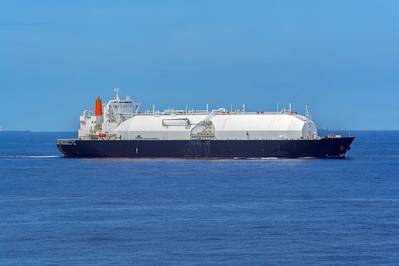US LNG Loading Delays Expected as Hurricane Slams Gulf Coast
Loadings of liquefied natural gas (LNG) cargoes from the United States likely will be delayed as a powerful storm strikes the heart of the U.S. oil and gas industry on the Gulf Coast, forcing several LNG plants to shut.
Hurricane Laura made landfall early on Thursday in southwestern Louisiana as one of the most powerful storms ever to hit the state, with forecasters warning it could push a wall of water 40 miles (64 km) inland from the sea. Landfall came near Louisiana's border with Texas.
Trading and shipping sources said they expect the resulting floods to delay LNG loadings from some ports and potentially boost Asian LNG spot prices. Before the hurricane struck, there had already been dozens of cancellations of U.S. cargoes over the summer as the coronavirus pandemic dented economic activity and global demand for natural gas.
"It's a Category 4 (hurricane) and we are talking about 150 miles (240 km) per hour (winds) and impact can be there till Friday. The question is how much damage can it cause to LNG facilities," said Kaleem Asghar, director of LNG analytics at ClipperData.
U.S. LNG exports were on track to fall to 2.1 billion cubic feet per day (bcfd) on Thursday, their lowest level since February 2019, according to data from Refinitiv.
"I expect delays. ... We haven't seen any loading from Sabine Pass and Sempra," Asghar said, referring to Cheniere Energy's Sabine Pass LNG export plant and Sempra Energy's Cameron LNG export terminal.
Both are in Louisiana and have suspended operations.
Pipeline gas flowing to Sabine was stopped earlier this week for the first time since the plant started operating in 2016.
Empty LNG tankers due to arrive at Sabine by the end of this week were in the Caribbean Sea, away from the hurricane. At least one LNG tanker, Bonito LNG, made a sharp U-turn away from Sabine Pass, said Rebecca Chia, analyst at data intelligence firm Kpler.
"Even though the LNG terminals are able to withstand hurricane winds of up to Category 5, the main concern is the impact of (any) storm surge in the surrounding area which will threaten the resumption of port activities," Chia said.
"Flash floods and high tidal waves make it impossible for vessels to safely berth and load their cargo."
She said several vessels in the Gulf of Mexico are now heading toward Cheniere's Corpus Christi LNG export plant in Texas instead, about 250 miles (400 km) to the southwest.
(Reporting by Jessica Jaganathan and Scott DiSavino; Editing by Tom Hogue and Will Dunham)

















